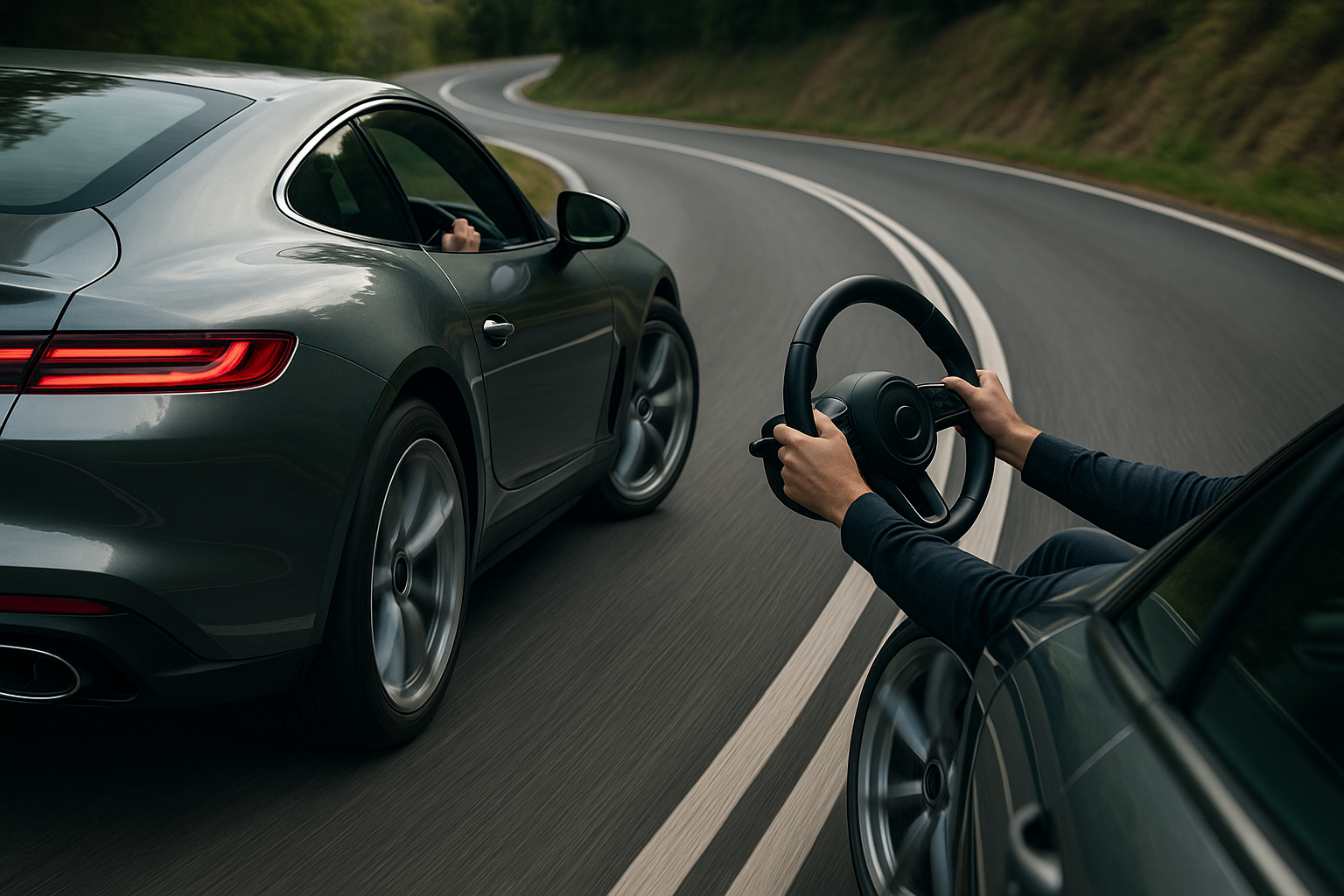Convertible Mazda Miata: Essential Guide to Models, Tops, and Ownership
The Mazda Miata has earned its reputation as one of the most beloved roadsters in automotive history, combining lightweight engineering with pure driving enjoyment. Since its debut in 1989, this compact two-seater has captivated enthusiasts worldwide with its responsive handling, reliable performance, and timeless appeal. Whether you're considering your first sports car or adding to your collection, understanding the Miata's evolution, features, and ownership realities helps you make an informed decision that matches your driving style and budget.

The Mazda Miata stands as a testament to the philosophy that driving pleasure doesn’t require excessive power or luxury. Its enduring popularity stems from a carefully balanced formula that prioritizes driver engagement, reliability, and accessibility. This guide explores what makes the Miata special, how different generations compare, and what potential owners should know before taking the plunge.
Why the Miata? Overview and Key Features
The Miata’s appeal lies in its simplicity and focus. Weighing around 2,300 to 2,400 pounds depending on the generation, this roadster delivers an immediate connection between driver and road. The front-engine, rear-wheel-drive layout provides balanced weight distribution, while the compact dimensions make it nimble in tight spaces and on winding roads.
Key features that define the Miata experience include a low seating position that enhances the sense of speed, short-throw manual transmissions that reward precise shifting, and suspension tuning that favors feedback over isolation. The convertible top remains a defining characteristic, offering open-air motoring at the touch of a latch or button. Modern iterations include advanced safety features, updated infotainment systems, and refined interiors while maintaining the core driving dynamics that made the original famous.
The Miata’s reputation for reliability adds practical value to its emotional appeal. Mazda’s engineering emphasizes durability and straightforward maintenance, making it accessible for both daily driving and weekend adventures. This combination of fun and dependability explains why Miata communities thrive worldwide, with owners ranging from casual drivers to dedicated track enthusiasts.
Generations and Model Differences
The Miata has evolved through four distinct generations, each bringing improvements while preserving the original spirit. The NA generation (1989-1997) introduced the world to Mazda’s vision of an affordable, modern roadster inspired by classic British sports cars. With pop-up headlights and a 1.6L or 1.8L engine producing 115 to 133 horsepower, the NA established the template for everything that followed.
The NB generation (1998-2005) refined the formula with updated styling, improved rigidity, and more power from revised 1.8L engines reaching 140 to 155 horsepower. Interior quality improved, and safety features expanded, though the fundamental driving character remained familiar to NA enthusiasts.
The NC generation (2006-2015) represented a more significant departure, with increased size, weight, and power. The 2.0L engine delivered 158 to 167 horsepower, and the retractable hardtop option (RF) provided year-round versatility. Some purists found the NC less engaging than earlier models, though it offered greater comfort and refinement.
The current ND generation (2016-present) returned to the Miata’s roots with reduced weight, sharper styling, and a focus on driving purity. Engine options include a 1.5L (in some markets) and a 2.0L producing up to 181 horsepower in recent iterations. The ND combines modern technology with the lightweight philosophy that made the original special, earning widespread acclaim from automotive journalists and enthusiasts alike.
Performance, Handling, and Driving Experience
Miata performance prioritizes balance over raw numbers. Acceleration ranges from modest to brisk depending on generation and engine, with 0-60 mph times typically falling between 6 and 9 seconds. The magic happens in corners, where low weight, responsive steering, and well-tuned suspension create an engaging experience at legal speeds.
The rear-wheel-drive layout and near 50/50 weight distribution allow skilled drivers to explore handling dynamics safely. The Miata forgives mistakes while rewarding smooth inputs, making it an excellent platform for learning advanced driving techniques. Track enthusiasts appreciate the car’s predictable behavior and extensive aftermarket support for performance modifications.
Daily driving comfort varies by generation, with newer models offering better noise insulation, more supportive seats, and improved climate control. The trade-off between comfort and sportiness depends on individual priorities, though all generations deliver the core Miata experience of connection and involvement that larger, more powerful sports cars often lack.
Convertible Top Types, Care, and Maintenance
Miatas feature either soft tops or retractable hardtops, each with distinct characteristics. Soft tops use fabric stretched over a folding frame, operating manually in most models or electrically in some newer versions. They’re lighter, simpler, and more traditional, though they require periodic replacement as fabric ages and weather seals deteriorate.
Retractable hardtops, available on NC and ND RF models, provide better insulation, security, and weather protection. The power-operated mechanism adds weight and complexity but transforms the driving experience between seasons. Hardtops typically require less frequent maintenance than soft tops, though mechanical components can develop issues over time.
Proper top care extends lifespan significantly. Soft tops benefit from regular cleaning with appropriate products, treatment with protectants to resist UV damage and water intrusion, and careful operation to avoid stress on aging fabric. Inspect weather stripping annually and address leaks promptly to prevent interior damage. Hardtop mechanisms should be lubricated according to manufacturer recommendations, and drainage channels kept clear to prevent water accumulation.
Winter storage considerations include keeping tops closed to maintain shape, protecting fabric from rodents and moisture, and ensuring proper support if storing the vehicle long-term. Regular use actually benefits convertible mechanisms by keeping seals pliable and preventing stuck components.
Buying Guide, Ownership Costs, and Practical Tips
Purchasing a Miata requires consideration of generation preferences, condition, and intended use. Earlier generations offer lower entry prices but may need more maintenance attention. Newer models command higher prices but include modern conveniences and warranties. Inspection priorities include rust in rocker panels and rear fenders, top condition and operation, maintenance history, and signs of track use or modifications.
Ownership costs remain reasonable compared to other sports cars. Insurance rates vary by driver profile and location but generally fall into moderate categories due to the Miata’s safety record and relatively low theft rates. Fuel economy typically ranges from 25 to 35 mpg depending on generation and driving style, making it economical for regular use.
Maintenance follows standard intervals with few unusual requirements. Oil changes, brake service, and tire replacement represent primary ongoing costs. Common issues vary by generation but rarely prove catastrophic or expensive compared to European sports cars. The active enthusiast community provides extensive knowledge resources, making DIY maintenance feasible for mechanically inclined owners.
| Aspect | Estimated Annual Cost | Notes |
|---|---|---|
| Insurance | $800 - $1,500 | Varies by age, location, and coverage |
| Fuel | $1,200 - $2,000 | Based on 10,000 miles annually |
| Maintenance | $500 - $1,200 | Routine service, higher for older models |
| Tires | $400 - $800 | Every 2-3 years depending on use |
| Top Replacement | $500 - $2,000 | Soft top every 7-10 years |
Prices, rates, or cost estimates mentioned in this article are based on the latest available information but may change over time. Independent research is advised before making financial decisions.
Practical considerations include limited cargo space, minimal weather protection in older models, and two-seat capacity. The Miata excels as a second car or for individuals without regular passenger or hauling needs. Test driving multiple generations helps identify which best matches your preferences, as each offers a slightly different interpretation of the roadster formula.
The Mazda Miata continues to represent accessible sports car ownership, combining driving enjoyment with practical reliability. Understanding the differences between generations, maintaining the convertible top properly, and anticipating realistic ownership costs prepares you for a rewarding experience with one of automotive history’s most celebrated roadsters. Whether navigating mountain roads or commuting through city streets, the Miata delivers a driving experience that reminds us why we fell in love with cars in the first place.




